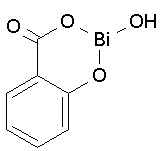|
Step 1 Step 2 Conclusion |
Structure Determination by Powder Diffractometry Round Robin - 2 Organized by : A. Le Bail and L.M.D Cranswick

|
||||||||||||||||||||||||||||||||||||||||||||||||||||||||||||||||||||||||||||||||||||||||||
| "Sadly, despite the excellent quality of synchrotron data and the
ingenuity of the scientists who collect it, not all structures can be solved.
Every laboratory has a supply of powder data sets which stubbornly
refuse to yield to structure solution. It is the existence of these sets
that will act as a continual challenge to both instrumental and algorithmic
developments"
from : P.W. Stephens, D.E. Cox & A.N. Fitch,
Synchrotron radiation powder diffraction, in: Structure Determination from Powder Diffraction Data, IUCr Monographs on Crystallography 13, Edited by W.I.F David, K. Shankland, L.B. McCusker & Ch. Baerlocher, Oxford Science Publications, Chapter 4 (2002) 49-87. |
|||||||||||||||||||||||||||||||||||||||||||||||||||||||||||||||||||||||||||||||||||||||||||
| Introduction
We completely subscribe to the above statement. It suggests that the more than 600 structures determined ab initio from powder diffraction during the last 20 years are the iceberg top. SDPD is known to be quite difficult, but scientists are secret about their failures, so that SDPD could even be much more difficult than usually said. It was thus decided to include in this second SDPD Round Robin some of those (splendid) "data sets which stubbornly refuse to yield to structure solution." Of course, some samples having known (unpublished) solutions were also incorporated. The indexing bottleneck was never really examined before, this is the subject of the step-1 below. The organizers thank a lot the participants, those who downloaded the
data (>100) , and those who took
time and find courage for sending the answers below (6 for the step 1 -indexing-,
and 2 for the step 2 -structure solution and refinement-) !
|
|||||||||||||||||||||||||||||||||||||||||||||||||||||||||||||||||||||||||||||||||||||||||||
| Step 1 - Indexing - raw results
Participant (Pn) cell proposals to samples 1-8 :
Post-deadline answers are accepted :. Post-deadline cell proposals to samples 1-8 :
|
|||||||||||||||||||||||||||||||||||||||||||||||||||||||||||||||||||||||||||||||||||||||||||
| Step 2 - Structure Solution and
Refinement
Participant (Pn) structure proposals to samples 1-3
:
Post-deadline answers are accepted. Now that cell proposals were made for samples 4-8 too, you may also try to solve their structures which would be the ultimate proofs of the cell correctness. More details can be found on these samples which could help. For instance, sample 7 is a commercial bismuth sub-salicylate [CAS : 14882-18-9] whose formula C7H5BiO4 can also be found written as : 2-(HO)C6H4CO2BiO (pepto-bismol, a drug for the traveler's Diarrhea - can give you a black tongue...). It was shown (together with sample 3) at IUCR XVIII, Glasgow, 1999 in a poster comparing the merits and advantages of synchrotron versus conventional X-ray. Its molecular formula appears quite simple : 
Hard to imagine a heaviest atom. Come on ! |
|||||||||||||||||||||||||||||||||||||||||||||||||||||||||||||||||||||||||||||||||||||||||||
| CONCLUSION
Two months for solving at least one of 3 structures by SDPD methodology would have been quite enough if SDPD was a routine job (a rainy week-end would have been sufficient). Well, two final answers for samples 1 and 2, either SDPD experts are lazy or SDPD is still not routine. This will be the main 2002 SDPDRR-2 conclusion. Anyway, three computer programs certainly deserve special mentions : INDEX for indexing (participant 5) and FOX (participant 2) as well as TOPAS (participant 7) for structure solution. The SDPDRR-2 seems to establish the triumph of direct space molecules/polyhedra/atoms location methods (FOX, TOPAS). But statistics cannot seriously be deduced from two contributions (owing to the number of data downloads, the return is less than 2%). Remember that also only two successful contributions were obtained at the SDPDRR-1 in 1998. Considering that still less than 100 SDPDs are published per year, it was clearly an utopy to expect that 3% of them could be solved in 2 months by people extremely busy at solving their own difficult problems. However this Round Robin certainly provides a new confirmation of the SDPD complex non-routine nature. For those wanting to continue to play with the SDPDRR-2 data sets, they will remain available. Best wishes ! PS- Computer programs used by the organizers for the step 1 (indexing) were TREOR, DICVOL, ITO, CRYSFIRE, McMaille, and for step 2 (structure solution) SHELXS (sample 2) and ESPOIR (samples 1-3). PS2 - Full conclusions to be published in CPD Newsletter 29. Preprint
available at the ArXiv
server.
|
|||||||||||||||||||||||||||||||||||||||||||||||||||||||||||||||||||||||||||||||||||||||||||
|
A. Le Bail : alb@cristal.org L.M.D. Cranswick : l.m.d.cranswick@dl.ac.uk ************ September-November 2002 Sponsored by the CCP14 and the SDPD Internet Course |